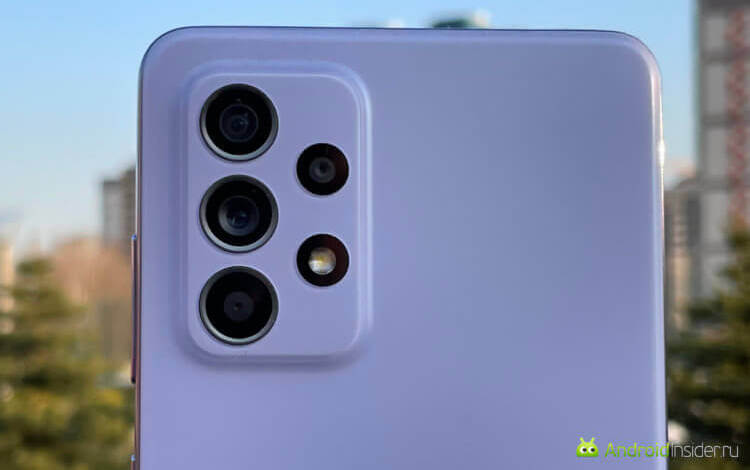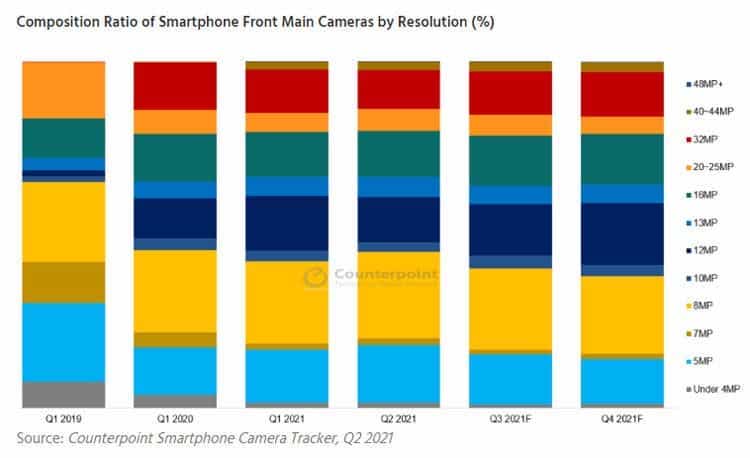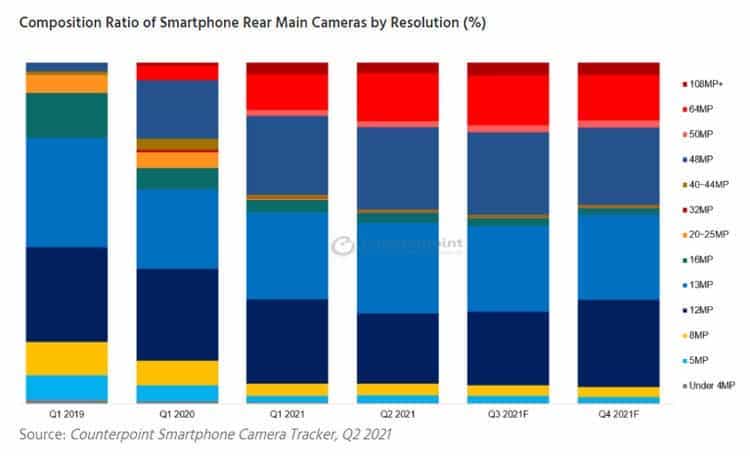The times when the question was relevant – Do you have a camera in your phone? – have passed ten years ago. Since then, any, even the cheapest phone, is equipped with at least one camera, or even two or three or four … and so on. But few people thought about how the approach to this element has changed recently and how typical competition has made it. Counterpoint Technology Market Research analysts regularly analyze the smartphone market. But most often these are sales, volumes, shipments, price and other economic indicators. This time, they decided to understand which resolution cameras dominate the market and why. The answer turned out to be quite interesting.

Phone cameras are getting better, but there is one metric that is definitely not worth chasing.
Contents
Most popular phone camera resolution
Analysts came to the conclusion that according to the results of the second quarter of this year, the majority of mobile devices on the market were released with image sensors with a resolution of 48 megapixels. Such gadgets were counted by 43%. For comparison, according to the results of the first quarter of this year, this figure was 38.7%. That is, it is this resolution that has become significantly more popular.
In the segment of smartphones with a price tag of $ 200 to $ 400, most models are equipped with 48 and 64 megapixel sensors . The share of devices with sensors with a resolution of 64 megapixels was 14% against 3.5% in the first three months of this year. Here, as we can see, the growth turned out to be even more serious. However, this can be seen even in presentations, where the number 64 sounds much more often than before.
What cameras are in expensive phones
If we talk about flagships, then in this case, manufacturers preferred 50-megapixel sensors . And 108-megapixel models , which started so briskly some time ago, turned out to be unclaimed , and manufacturers are very reluctant to choose them for their models. Their share in the second quarter of this year was only 3.1%.

Distribution statistics for main cameras by resolution.
In the budget segment with a price tag of up to $ 100, sensors with a resolution of 8 megapixels set the tone . The share of such devices was 45.2%. At the same time, the number of models with 32 Mp and 48 Mp sensors is also growing. This confirms the fact that technologies become cheaper over time and gradually descend into an increasingly budgetary segment.
48MP and 64MP have become the mainstream for models between $ 200 and $ 400, while flagship smartphones use large-area sensors to deliver professional performance similar to DSLRs. Here 50 megapixels have become a much more popular choice. While the 108MP share fell to 3.1% in Q2 2021, more affordable sensors with this 0.7μm pixel-based resolution continue to roll out to mid-range models from manufacturers such as Redmi and Realme. Ethan Qi , senior analyst at CounterPointResearch, said when commenting on this shift in resolution requirements.
Camera with a resolution of 200 megapixels
In September 2021, Samsung pushed the smartphone industry further towards the 200MP era with the new ISOCELL HP1 sensor, which is expected to be part of flagship models in the coming quarters.

Front camera resolution statistics for phones.
In October, Sony launched the Xperia Pro-I with a 1-inch 12MP rear main camera , aiming to provide consumers with DSLR-like photography. While mid-range and high-end smartphones will continue to use high-resolution, large-area image sensors, it’s a little easier to explain to the consumer that the camera is better than the competition. It just so happened that it was megapixels that became the measure of quality .
Does the processor crisis affect cameras?
However, the cameras are now not in the best position, as they are also under pressure from the semiconductor crisis . It not only does not allow the production of sensors in sufficient quantities, forcing manufacturers to choose from something else, but also negatively affects the technology.